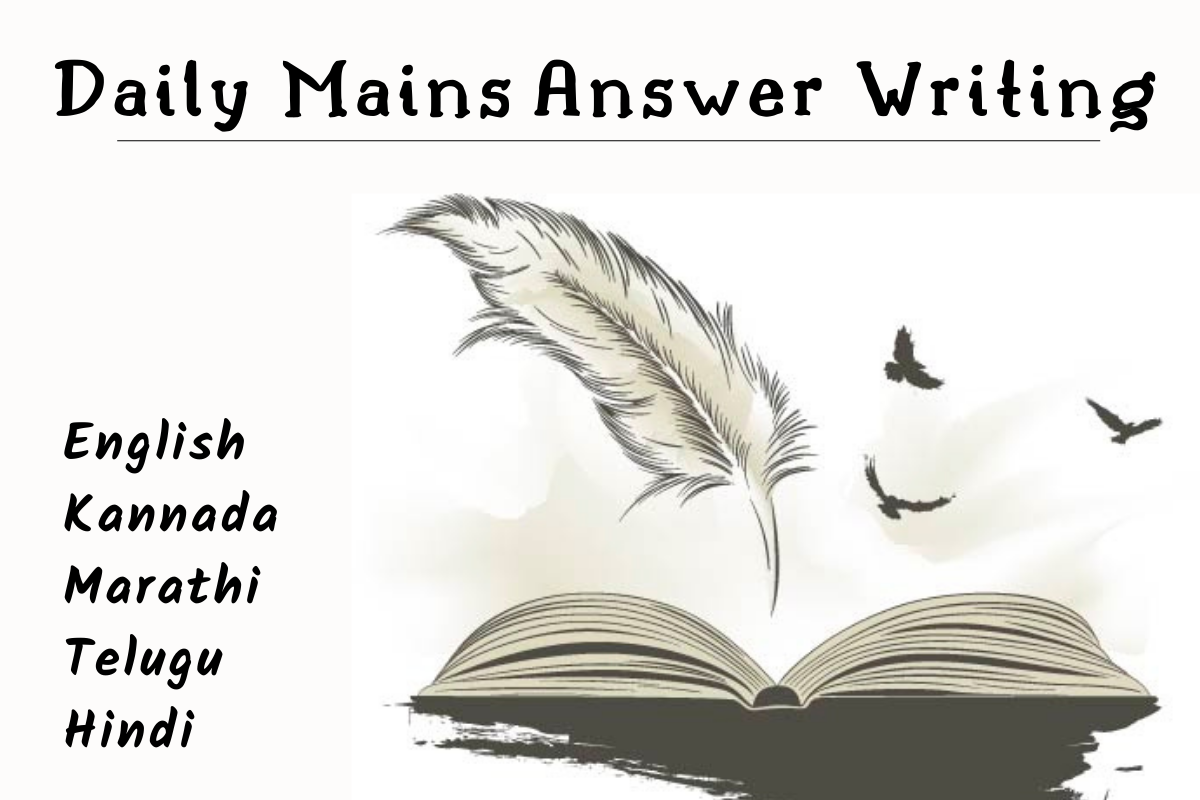Public Confidence in the judiciary is strengthened not by the resort to contempt powers but by orders and judgements. In the light of the recent controversies, Do you think it is time to revisit the Contempt
of Court Act, 1971? Justify your
answer. (15 marks) (250 Words) Article 129 and 215 of the Constitution of India empower the
Supreme Court and High Court respectively to punish people for their contempt and was provided with this power under Contempt of Court Act, 1971 which defines contempt powers of the judiciary.
It is aimed to: Prevent scandalization or lowering the authority of any court. Prevent interference with the due course of any judicial proceedings. Strengthen the court’s image as legal authority and that no one is above the law.
However, in the recent past India’s courts have routinely invoked its contempt powers to often punish expressions of dissent on purported grounds of such speech undermining or scandalizing the judiciary’s
authority, but overuse of contempt powers may undermine faith in judiciary, it earns more respect and
trust through it’s transformational judgements such as Sabarimala case verdict, LGBTQ+ community rights, Concept of ‘Green crackers’ during Diwali etc.
Arguments against Contempt of Court:
Contempt of Court proceedings have the effect of muzzling free speech guaranteed under Article
19(1)(a) of the Indian Constitution. Ex. Justice Karnan case.
Article 19(2) includes ‘contempt of court’ as a reasonable restriction on free speech but its
justification in its present form is not tenable in a democracy
Speech in criticism of the courts ought not to be considered as wilful disobedience but to be taken as constructive criticism. Ex. Lawyer Prasanth Bhushan issue in this regard to be seen as constructive criticism.
Most of the judgements are being pronounced in the name of public interest but it is the judge who is being personally hurt by criticisms.
Currently, there are 96000 cases pending in the civil and criminal contempt cases according to the judicial data grid.
Court itself held that criticism of the court that does not impair and hamper the administration
of justice cannot be punished as contempt of court.
The Contempt powers should be used in such a way as not to violate Right to Freedom of Speech while also ensuring independence of the Judges. The judiciary must be highly liberal while respecting freedom of speech and allow fair criticism as permitted under the 1971 act. The Contempt of Court Act, 1971 must
be suitably amended or repealed on the lines of the United Kingdom and
United States.
Thus, the right balance between freedom of speech and contempt powers of court can be achieved by
the judiciary itself as the truth, faith and confidence of the citizens of the country in the judicial system is sine qua non for the existence of the rule
of law.
All money bills are finance bills, but all finance bills are not money bills. Explain.(15 marks). (250 Words) Money Bill: Article 110 of the Constitution discusses the Money bill. It can only be introduced in the Lok Sabha and the same is deemed to be a money bill if it contains ‘only’ provisions dealing with all or any of the following matters:
The imposition, abolition, remission, alteration or regulation of any tax.
The regulation of the borrowing of money by the Union government.
The custody of the Consolidated Fund of India or the contingency fund of India the payment of money into or the withdrawal of money from any such fund.
The appropriation of money out of the Consolidated Fund of India.
Declaration of any expenditure charged on the Consolidated Fund of India or increasing the amount of any such expenditure.
The receipt of money on account of the Consolidated Fund of India or the public account of India or the custody or issue of lunch money or the audit of the accounts of the Union or of a state.
Any matter incidental to any of the matters specified above. Example: The Aadhar (Targeted
Delivery of Financial and Other Subsidies, Benefits) Bill, 2016. However, a bill is not to be deemed to
be a money bill by reason only that it provides for:
The imposition of fines or other pecuniary penalties, or The demand for payment of fees for licenses or fees for services rendered; or
The imposition, abolition, remission, alteration or regulation of any tax.
If a question arises about whether a bill is a money bill or not, the decision of the Speaker of the Lok
Sabha is final. The Constitution lays down a special procedure for the passing of money bills in Parliament. and that too on the recommendation of the president. Every such bill is considered to be a government bill and can be introduced only by a minister.
Financial Bills is a bill that contains not only any or all the matters mentioned in Article 110, but also other matters of general legislation and provisions involving expenditure from the Consolidated Fund of India but does not include any of the matters mentioned in Article 110. It is treated as an ordinary bill and in all respects it will be ordinary bill even though it involves payments and borrowing Example: Civil
liability of Nuclear damage Act, 2010 is governed by the same legislative procedure which is applicable to an ordinary bill. For instance, a bill that contains a borrowing clause, but does not exclusively deal with borrowing. In two respects, a financial bill is similar to a money bill—
(a) Both of them can be introduced only in the Lok Sabha and not in the Rajya Sabha, and
(b) Both of them can be introduced only on the recommendation of the president.
Hence, it can be said that all money bills are financial bills but not all financial bills are not money bills and also the Government by labelling a bill must ensure prudent fiscal management is achieved through these.

